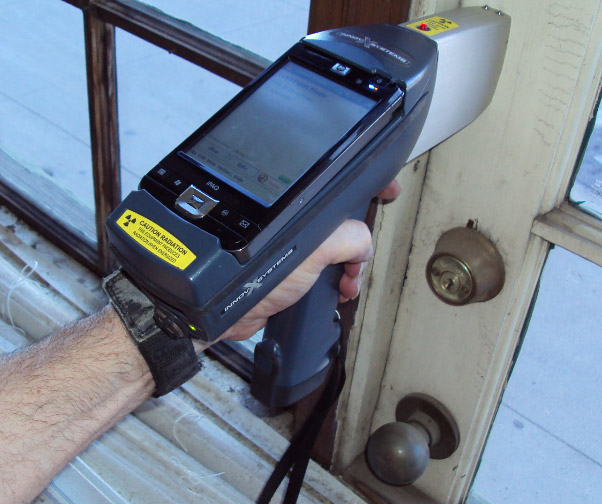Relied On Lead Paint Removal Company-- NYC's Premier Lead Abatement Service
Finest Practices for Making Sure Safe and Thorough Lead Violation Reduction
Dealing with lead violation reduction requires a multi-faceted technique to make sure both safety and security and compliance. Initial evaluations making use of sophisticated discovery techniques such as XRF analyzers set the phase for a precise understanding of contamination degrees. Incorporating proper containment methods, including closed barriers and HEPA purification, combined with the use of personal protective equipment (PPE) for workers, develops the backbone of a safe procedure. Thorough clean-up protocols, featuring HEPA vacuuming and wet-wiping, are critical. Yet, it's the last clearance process, involving complete assessments and research laboratory screening, that genuinely verifies a lead-free environment, ensuring lasting safety and security. Just how do these practices adjoin to guarantee comprehensive lead reduction?

First Evaluation
Conducting an initial evaluation is a crucial initial step in lead infraction reduction. This stage encompasses a detailed evaluation of the building to recognize the existence, extent, and particular places of lead-based hazards. Certified professionals, such as licensed lead examiners or take the chance of assessors, must carry out an extensive website examination, making use of devices like X-ray fluorescence (XRF) analyzers to precisely identify and determine lead focus in paint, dust, dirt, and water.
The analysis should also include an evaluation of the building's background, previous records, and any type of complaints or wellness issues reported by passengers - Lead Removal Contractors. Documenting the findings carefully is essential, as these documents form the basis for developing an efficient abatement method. A detailed assessment also entails sampling and lab evaluation, which are critical to verify the existence of lead and guide succeeding actions
In addition, it is necessary to connect the outcomes transparently to all stakeholders, including residential property owners, lessees, and regulative authorities. By making certain that the preliminary evaluation is conducted with accuracy and roughness, experts can lay a solid foundation for a targeted and reliable lead abatement procedure, eventually securing public wellness and making certain compliance with regulatory criteria.
Appropriate Control
Proper control is important to stop the spread of lead pollutants during abatement activities. Efficiently handling control lessens the threat of lead dust and debris migrating to non-work locations, consequently safeguarding both the atmosphere and people outside the instant work area. To attain appropriate containment, an impermeable obstacle of plastic sheeting must be developed around the workspace, making certain all joints and sides are securely secured. Lead Removal Contractors. This barrier needs to prolong from flooring to ceiling and be taped down to avoid any kind of leaks.

Routine inspections of the control location are essential to inspect for breaches or weak points in the barrier. Any determined issues ought to be immediately addressed to maintain the integrity of the control. By sticking to these methods, reduction projects can efficiently regulate lead contamination and mitigate connected health threats.
Employee Defense
Guaranteeing employee security is extremely important throughout lead reduction projects to avoid occupational exposure to hazardous lead fragments. Essential procedures consist of using individual safety equipment (PPE) Visit Website such as respirators, handwear covers, and full-body suits specifically designed to obstruct lead dirt and fumes. Employees need to undergo thorough training on the appropriate usage and upkeep of PPE, including healthy screening for respirators to guarantee maximum efficiency.
Engineering controls, such as local exhaust air flow systems, are essential in lessening air-borne lead focus in the workplace. Administrative controls should additionally click now be implemented, consisting of limiting the duration of exposure and turning workers to decrease specific direct exposure times. Regular clinical surveillance and organic tracking are crucial for early discovery of lead absorption, making it possible for timely treatment and treatment.
Furthermore, establishing a purification protocol is crucial. Workers need to comply with strict decontamination procedures before breaks and at the end of their change to stop lead dust from being carried outside the workplace. This includes detailed hand and face washing with lead-specific cleaner and changing out of index infected garments.
Precise Clean-up
Keeping a risk-free workplace extends beyond worker defense and encompasses meticulous clean-up to make certain lead particles are extensively removed from the site. The procedure of precise cleaning is essential in protecting against the recontamination of the eased off location and protecting both present and future residents.
To achieve an extensive cleanup, all job locations have to be systematically sanitized. This entails the usage of specialized HEPA (High-Efficiency Particulate Air) vacuum cleansers and wet-wiping methods to capture and remove fine lead dirt that may have decided on surface areas. It is necessary to clean all horizontal surface areas, including floors, home window sills, and kitchen counters, as well as vertical surfaces that may have caught lead bits.
Workers have to wear ideal individual protective devices (PPE) throughout cleanup to prevent direct exposure to recurring lead dirt. Used cleaning materials such as wipes, sponges, and wipe heads ought to be taken care of according to unsafe waste disposal laws.

Final Clearance
Final clearance is the vital concluding phase of lead abatement that establishes whether the site is risk-free for reoccupation. This critical action entails comprehensive assessment and screening to validate that all lead hazards have been successfully eliminated.

Final clearance screening not only safeguards future occupants but likewise ensures conformity with local, state, and federal regulations. Additionally, it offers as a recorded recognition of the abatement professional's adherence to market finest practices. Making sure a detailed and effective final clearance is necessary in securing public health and promoting count on in the abatement procedure.
Verdict
Guaranteeing safe and thorough lead infraction reduction requires a diverse strategy including first analyses with innovative detection methods, effective containment techniques, rigid employee protection protocols, and precise cleanup procedures. The last clearance phase, including thorough examinations and laboratory screening, is crucial to verify conformity with EPA requirements. Adherence to these best practices guarantees a risk-free setting for passengers, minimizes wellness threats, and upholds regulative requirements, therefore promoting public health and wellness and security in lead-affected locations.